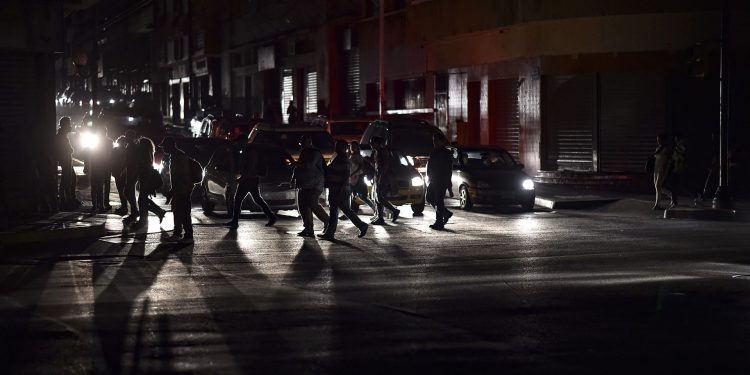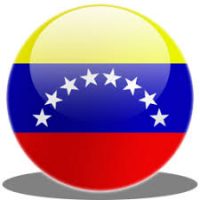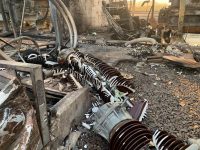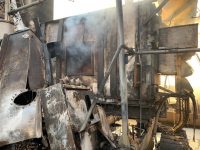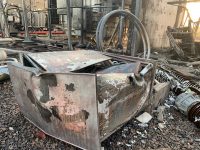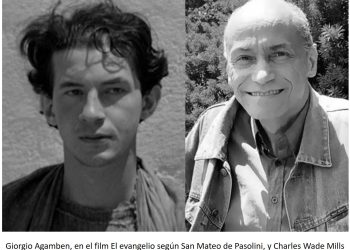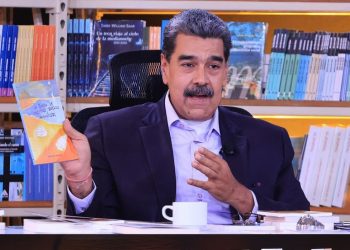
Electric Attack against Venezuela
- How was the Venezuelan Electrical System attacked?
- U.S. Congress Authorizes Technology to Attack Power Systems.
- Venezuelans showed solidarity during blackout
- Gurí: Venezuelan Engineering Achievement
- Attack to generation yard caused second blackout
- Fusil could be manufactured and brought from the United States
- U.S. Electric Attack Caused $1 Billion Daily in Losses
- Peace was born in the Pedro Básalo of El Valle
- Fourth attack was synchronized and programmed against Guri transmission lines
- Corpoelec workers played heroic role in the face of electromagnetic terrorism
- DOCUMENTS, ARCHIVES AND ADDITIONAL EVIDENCE.

How was the Venezuelan Electrical System attacked?
Charles Delgado
After previous investigations, the president of the Bolivarian Republic of Venezuela, Nicolás Maduro, accused the government of the United States of affecting the National Electric System.
«The cyber attacks happened in three stages. The first was against the brain of the computerized system of the company Corporación Eléctrica Nacional (Corpoelec) in the Simón Bolívar Hydroelectric Power Station, located in the El Guri dam, in the state of Bolívar; and the cyber attack from outside to the conduction brain that remains in Caracas, then to the transmissions after being recovered,» explained the Head of State, Maduro en Cadena Nacional y Televisión, from the Miraflores Palace.
[embedyt] https://www.youtube.com/watch?v=mfr7y7IEGb4[/embedyt]
Starting from what the president denounced, Maduro. How the United States attacked the Venezuelan Electrical System.
There are already precedents for cyber attacks on power plants in other countries by the United States. The recent one occurred on December 23, 2015, when homes in the Ukrainian region called Ivano-Frankivsk with a population of 1.4 million were left without electricity.
According to the Ukrainian media TSN, the cause of the power outage was a virus used in a hacker attack called Industroyer, which was introduced by external agents after research by Ukrainian experts.
After analyzing ESET’s own telemetric data and experts in the technological area, they discovered that the reported case was not an isolated incident and that other energy companies in Ukraine had also been attacked by cybercriminals at the same time1.
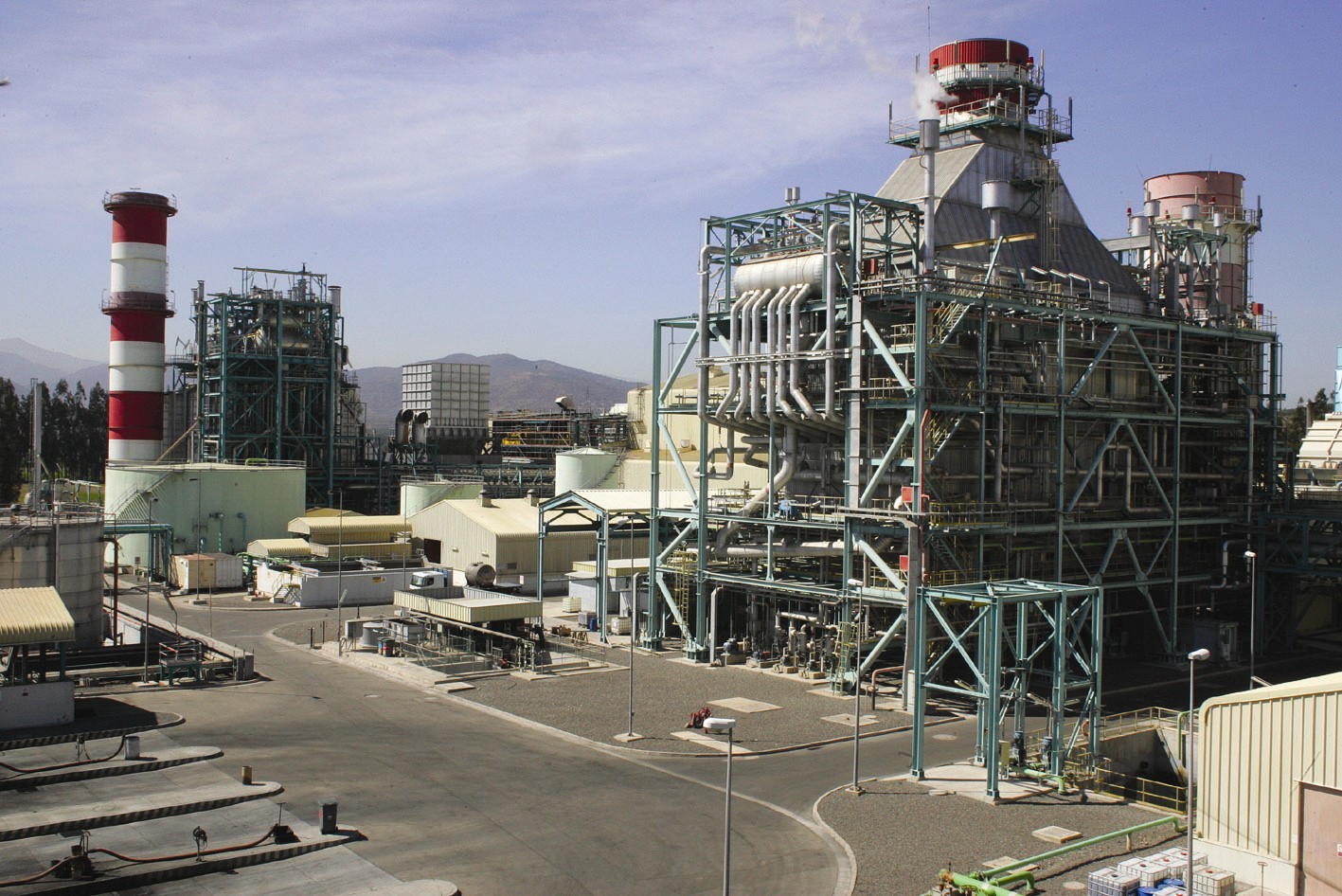
The scenario of attack on the electrical system was simple, describe the experienced researchers with deep knowledge of the latest threats and trends in information security WeLiveSecurity.
Robert Lipovsky and Anton Cherepanov explain that the target computer receives a targeted email containing an attachment with a malicious document. Ukrainian security company CyS Centrum published two screenshots of emails used in BlackEnergy campaigns, where attackers supplanted the sender’s address to make it look like it belonged to Rada (the Ukrainian Parliament)1.
The report states that a large number of video materials and various documents were destroyed as a result of the attack.
Also, Lipovsky and Cherepanov note that the fact caused files to be deleted from the system so that the equipment would not boot (a typical feature of this type of destructive Trojan horses), the KillDisk variant detected in power companies also appears to contain some additional functions specifically designed to sabotage industrial systems.

The Industroyer virus is a particularly dangerous threat, since it is able to control the switches of an electrical substation directly and cancel the system automatically, says Lipovsky and Cherepanov, who agree with President Maduro in explaining that the attack made the screen go black.
To do so, it uses industrial communication protocols implemented worldwide in electrical power supply infrastructures, transport control systems and other critical infrastructure systems, such as water and gas1.
Industroyer is the first malware capable of attacking a power grid automatically; for example, BlackEnergy had the same target but attacked the infrastructure and then the power outage had to be executed manually.
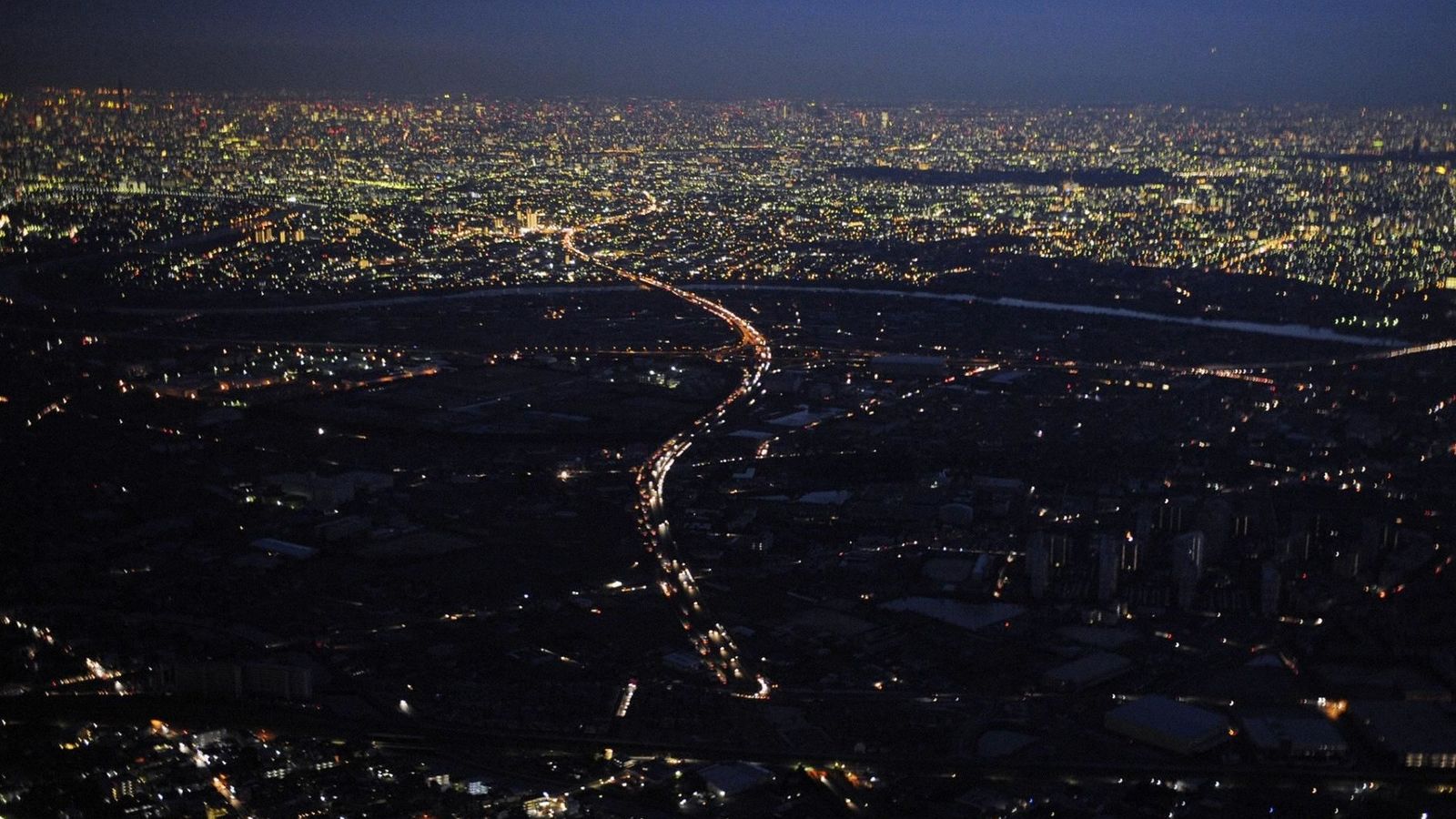
Four years ago it happened in Ukraine; but why the U.S. made the attack, because in this RT report in Spanish shows how the interference of the Americans was evident in the elections and other areas of Ukraine (See Video).
[embedyt] https://www.youtube.com/watch?v=jtm_ygNj1gA[/embedyt]
The denunciation made public against the United States by the Venezuelan President is certified by analyst Vladimir Adrianza, who is responsible for generating electricity for more than 70% of the national territory.
Adrianza says the power plant has a system of supervision, control and data requisition (Scada) with Canadian technology from Swiss company ABB that had control of it because it had proprietary software from North America.
This dependent fact made the Venezuelan state vulnerable because it depended on a single source, warned Adrianza in 2010 and 2011.
He added that when he was a consultant for the People’s Ministry of Electric Power in 2010, an employee of the service corporation told him that they gave the owners the key to maintain the service. Before this, Adrianza alerted the State because it is not possible to give data as easy when the system is managed by another nation (see video).
[embedyt] https://www.youtube.com/watch?v=xV8Xi-N4l8U[/embedyt]
Iván Ramírez, an economist, also agreed with Adrianza when he pointed to the U.S. as its author because there was already evidence in social networks.
«Marcos Rubio had a message on his personal Twitter account indicating what happened,» says Ramírez, who mentions an influence who explains an alleged blackout in Venezuela. Through an interview, communicator Luis Carlos Díaz indicates days before the attack.
Joanen Cunyat, journalist and director of Revista Roros21 commented that the United States already had an open intermission against Venezuela and was being made explicit by international media such as El País de España, CNN among others, he commented on HispanTv in the program Foro Abierto 2.
For his part, Marcos Teruggi, an Argentine sociologist, also accuses the alteration of normality with an attack from abroad, since the United States continued to attack the Bolivarian Government.
Fernando Giuliani, Venezuelan psychologist indicates that the attack on the Venezuelan Electrical System does not have faces while the one that occurred in 2002 against PDVSA did. In spite of it, he points out that in the social networks a non-existent chaos was disclosed or as it had raised it, from the outside 3.
Meanwhile, Oscar Lloreda, an international analyst, recalled that the assassinated journalist Ricardo Durán warned about the hiring of personnel participating in the act of sabotage of PDVSA in 2002 in Corporación Eléctrica Nacional, S.A.
«I knew that cutting off the electricity supply would cause a massive cascade effect on the other services,» commented Lloreda.
[embedyt] https://www.youtube.com/watch?v=rXdextW9WXg[/embedyt]
The analysts and experts pointed out, and President Maduro point to the government of the United States for the blackout in Venezuela; but he failed to mention that the U.S. Congress approved the use of cyber weapons to «protect itself from an external aggression.
Source:
1 www.welivesecurity.com
2 https://www.youtube.com/watch?v=GdX1MciJ_Jc
3 https://www.youtube.com/watch?v=aST-RHImCao

U.S. Congress Authorizes Technology to Attack Power Systems
Charles Delgado
Already experts and analyst as mentioned by the portal WeLiveSecurity there are viruses that can attack electrical system anywhere in the world, but you can also sky in the areas of energy transmission.
The United States possesses this technology as the President of the Bolivarian Republic of Venezuela, Nicolás Maduro, denounced when he accused the U.S. government of being behind the cyber attack on the brain of the Venezuelan electric complex.
This statement by Maduro is certified by the U.S. Congress when it approves the budget for a defense system.
According to the Commission to Assess the Threat to the United States by Electromagnetic Pulse Attack (EMP), Volume 1: Executive Report2004 published in 2008, Americans explain how this weapon is capable of damaging infrastructure.
According to the information in the document, it can cause strong damage to the electrical system in any country.
The electromagnetic fields produced by weapons designed and deployed with the intention of producing EMPs have a high probability of damaging the electrical power systems, electronics and information systems on which U.S. society depends. Its effects on dependent systems and infrastructure could be sufficient to qualify as catastrophic for the Nation. Depending on the specific characteristics of the attacks, unprecedented cascade failures of our major infrastructures could occur.
Also, «they can seriously affect other important aspects of life, including the financial system; means to bring food, water and medical care to the citizenry; trade; and production of goods and services.
In this video, the effects of the EMP are shown as it materializes. (see video)
[embedyt] https://www.youtube.com/watch?v=qlIuflgsqlc[/embedyt]
Ten authors led by Dr Johan S. Foster, Jr., who is an American physicist, director of the Lawrence Livermore National Laboratory wrote the document that evidences the attack system.
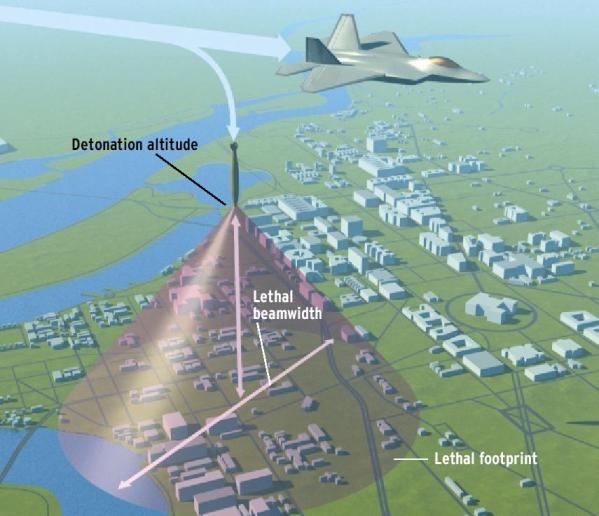
There is another report, Report of the Commission to evaluate the threat to the United States by the electromagnetic pulse (EMP) of the year 2008, which shows how was the procedure of practice of this technological instrument.
SCADA are electronic control systems that can be used for data acquisition and control in large and geographically distributed infrastructure systems…. Examples of typical RTU data acquisition actions include processing signals from sensors such as thermocouples, voltage sensors, or power meters and reporting equipment status, such as switch and switch positions… To this end, the EMP Commission sponsored and funded a series of tests of common SCADA components on a government-owned EMP simulator (see Figure 1-4). The simulation tests provided the opportunity to observe the interaction of electromagnetic energy with the equipment in an operational mode.
Said report shows how the system can be used against any target. Now with this technology there is a possibility that Venezuela has been a victim of the blackout that left half of the population without light.
An amateur recorded on March 11 as near the Guri facilities could be made the attack on Venezuela.
[embedyt] https://www.youtube.com/watch?v=81ZqpswpVNE[/embedyt]
The coincidence that also NASA has recording when the blackout was applied in Venezuela
[embedyt] https://www.youtube.com/watch?v=uAjWJviVm2c[/embedyt]
Thus, the U.S. government has the technology to attack an adversary found anywhere on the planet. This places the country, Venezuela, as a permanent point of attack against Venezuelan society.
How much loss occurred during the days of the blackout? What surfaced in the people?

Venezuelans showed solidarity during blackout
Far from the anarchy that was intended to create in the country with the attack on the national electricity system, in Venezuela emerged the solidarity of the people during the blackout registered since last March 7; the neighbors helped each other, thus demonstrating their love for each other, this was confirmed by Manuel Daboin, who helped organize the neighbors of his building to get water out of the tank, since they did not have the effect of the power outage.
«There was more interaction with the neighbors, as we organized and planned to fetch water from the building’s tank. I helped bring the water tobos to every apartment in the building where I live. In my house we agreed to limit water use to the highest priority,» said Daboin, who also said he stayed in his house for the duration of the power outage.
Regarding the food supply, Daboin said they had no major problems because they had food at home. «Thank God we had enough food to last those days,» said Daboin, who lives in the Altagracia parish, west of Caracas. Meanwhile, José Quiroga said they asked for food from nearby grocery stores. 
«The day after the blackout, on Saturday, March 9, we took advantage of daylight and went to a business we know, near the house, to buy food. As the person in charge knows us, we remembered that we would pay him later, while the emergency happened,» said Quiroga, who lives in Bella Vista, southwest of Caracas.
He added that when the lights went out and the hours passed, he felt fear and concern within his family and neighbors because he felt an atmosphere of warlike confrontation.
«There were worried neighbors. We were in a state of war and we didn’t know anything. We said, the gringos are coming to invade us. Thank God there was a conscience within the community. There was a lot of awareness,» Quiroga said.
But that feeling of uncertainty in the Quiroga community did not prevent them from organizing and grouping together to guard the area where they live, because there were unscrupulous people who wanted to loot or steal, they could not do it because there were also Bolivarian National Guard officers patrolling, he said.
He said that during the days of the blackout he was unable to communicate with family members who live in other parts of the city. «We had all our phones unloaded, we were caught unprepared,» Quiroga said. While Quiroga was incommunicado, Milagros Raquena did have his cell phone charged, which allowed him to give birth in the dark.
«The first thing I did was to embrace serenity in order to have the capacity to accept, tolerate, and face what was happening. That of course was the first day. I remember it was about 5:30pm when the blackout occurred. I was protected by prevention at home. At nightfall, I didn’t need a candle, I still had my phone charged and I used the telephone flashlight,» said Requena, who lives in San Agustín Norte, in Caracas.
Arriving in daylight on Saturday, March 9, Requena says he went to trot to Los Caobos to spend the day. When she returned to her building, she learned that they had spare water; thanks to that, she was able to supply her apartment and help the elderly.
«When I returned to the building, I dedicated myself to helping grandparents and children carry water. We were carrying water from the ground floor. Most of these people lived on the 12th, 14th, 16th and 18th floors of the building. I had to raise the water tobos for my grandparents. I felt like a gladiator helping the neighbors,» Requena said.
She helped herself with reading and sports, so the days flowed for Requena, who bought tangerines, cambur, bananas to feed herself. In addition, she had a gas stove and food products from the basic basket delivered by the Local Food and Production Committee (CLAP), this allowed her to eat without problems during the days of the blackout.
While Requena was grateful for having food in her home, José Luis Tovar related that when the blackout occurred, the inhabitants of the popular sector, where she lives, took the situation calmly, without any novelty.
«Well, we helped our devices with the vehicles. The telecommunications went uphill…a few days before we had brought gas to the community, that allowed us to cook…We had solidarity support from the community,» said Tovar, who lives in La Pastora.
Tovar tells how they created lighters with diesel oil in beer bottles.
This type of lighting was also used by Nelly Campos, who had in her home in El Valle several liters of fuel that she used to create a kind of handcrafted lamps.
«I grabbed mayonnaise containers, beer bottles and cut old clothes to make the lighters. At first it took me a while to turn them on, they go out, but in the end I did it. That’s how we lit up in my house on the days when we had no light. When I saw what we did some neighbors came, I gave them fuel and with what we had on hand we made lights for each house and people were grateful for that help. Other families on the block made their lamps with oil and water. So we spent three days until the light arrived, thank God,» commented Campos, from the San Andrés.
Campos commented that in his home they have cylinder gas, which allowed them to cook without problems. «We also had some Clap products left and we had some cash to buy what we lacked; because I sell ice cream in the house, and with that I was able to buy a little food, every day, so that we will not be lost,» Campos said.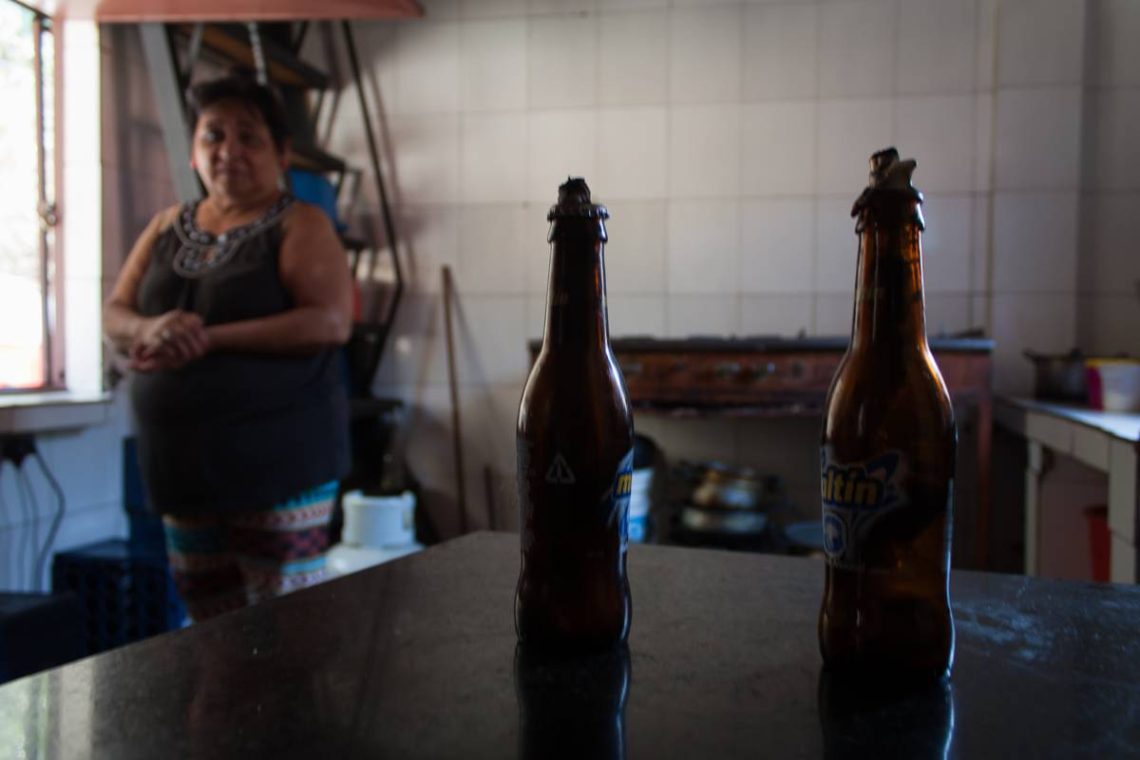
Although she couldn’t buy food like the young Campos, the social fighter Nelsón Peralta was able to share some of her food with the neighbors.
«The experience was a little more bearable thanks to the company of the neighbors, since I was able to get to know them a little more, neighbors whose faces I almost never see. We exchanged ideas and we were even able to share part of our food; drinking water, rice, flour, pasta among other things,» said Peralta from his home located in Guarenas, Miranda state.
When the blackout occurred, Peralta was at his place of work. Upon leaving, it was found that the private buses took advantage of the circumstance.
«To be able to move to my residence it was an odyssey, since there was no lack of those who take advantage of difficult situations to make a profit through the payment of the fare; but well, once in my residence I thought of an immediate solution to move forward with my family. We had to use more than anything the inventiveness that runs through our veins, since our grandparents taught us how to be without light and we invented alternative candles and candelabras made of oils or kerosene, substances that many Venezuelan households frequently find. From then on, the experience was a little more bearable,» Peralta said.
But not everything happened as you want. To Venezuelan Eizel Guariguata, because she suffered needs during the blackout.
«We don’t have neighbors; but the nuns from the front school gave us water from their tank, the girls made in their little girls’ cup and we adults in pote the urine and so on in a bag until we ran out. We put the used water in the bathroom. The baby’s diapers are made of cloth and I ran out of clean rags, thank God I still had two disposable diapers and then my sister-in-law went to Caricuao to her mother’s house. We ate twice a day to give up the food, since we didn’t have cash and we had to change two kilos of rice for bananas, and another for a few pineapples to be able to eat something else,» said Guariguata, who lives in Antimano, west of Caracas.
Although some families suffered problems like Guariguata, in other parts of the country, the Venezuelan people also behaved in solidarity with their compatriots, despite being at a critical moment after the power cut.
Respondents acknowledged that they experienced a difficult situation, but stressed that peace prevailed in each community.
How does the Simón Bolívar Hydroelectric Plant work?
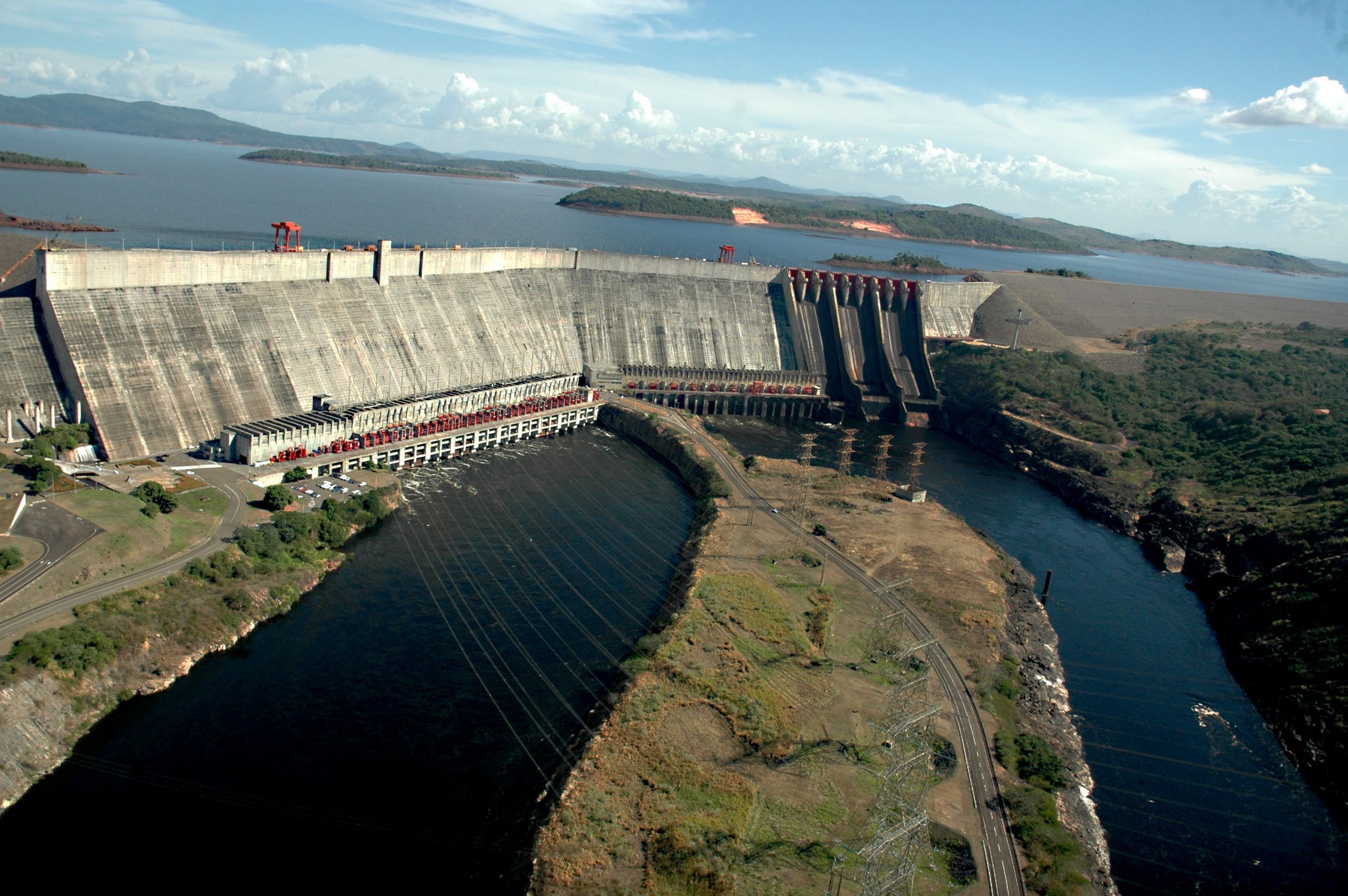
Gurí: Venezuelan Engineering Achievement
In spite of being a victim of the cybernetic attack provoked by the United States, as the president said, Nicolás Maduro the Thermoelectric Plant «Simón Bolívar» is one of the masterpiece built by Venezuelan professionals.
Omar Hurtado Rayugsen, history indicates that the construction of the same one was during more than half century, reason why the construction of the complex has accompanied the political evolution of the country, between coups d’état, (1945), representative system until the direct and participative democracy», he commented.
His planning began with the so-called Revolutionary Government Junta (1947) with the National Electrification Plan of 1947, followed by the brief presidential term of Romulo Gallegos (February to November 1948), the Military Junta presided over by Carlos Delgado Chalbaud and the Government Junta presided over by German Suarez Flamerich, Hurtado Rayugsen added.
The works as such, started in the period of Marcos Perez Jimenez. They continued with the Board of Government initially presided over by Wolfgang Larrazábal and, finally, by Edgar Sanabria; they followed Rómulo Betancourt, who built the first stage of the dam that generates 70% of energy to the Venezuelan people.
Yolanda Segnini, in her book History of Culture in Venezuela comments on the difficulties of the Betancourt presidential period with strikes, attempted assassination, military uprising and street agitation, was able to promote in its first stage the Gurí dam, in the state of Guyana.
In spite of the complicated period, Betancourt continues executing the National Electrification Plan elaborated in 1947, when he was president of the Revolutionary Government Junta after the overthrow of Medina Angarita.
«It is the first work, it already means an important fact. In full swing, it will give Venezuela a return to its three dimensions in social, economic and political. We made a contribution from the creative faith, and the creative trust of our people,» Betancourt said in 1963 when the construction of the power plant began.
After the construction of the Complex began, here is this EDELCA documentary (See video).
[embedyt] https://www.youtube.com/watch?v=6mFo8xziOHU[/embedyt]
After construction began in August 1964, Venezuela began to make an important leap, as the Gurí dam would save the state 168 billion barrels of oil per day, according to EDECAL’s documentary directed by Henry Nadler.
To this construction, the historian Hurtado Rayugsen commented that «the works of civil engineering begin with the election of the reservoir of Gurí, that takes its name of a small town settled in the bottom of the Canon of Nekuima, starts in the middle of the first lustrum of the sixties».
With the construction of the gravity dam, the concrete wall and the embalming of the water, the work is being built, says electrical engineer Rafael Rodriguez.
«The Lower Caroní Hydroelectric System is made up of a series of dams, whose basic function is to dam the waters of this river and its main tributaries, the most important being the Paragua, for multiple purposes, of which the generation of electricity has been fundamentally privileged,» explained historian Hurtado Rayugsen.
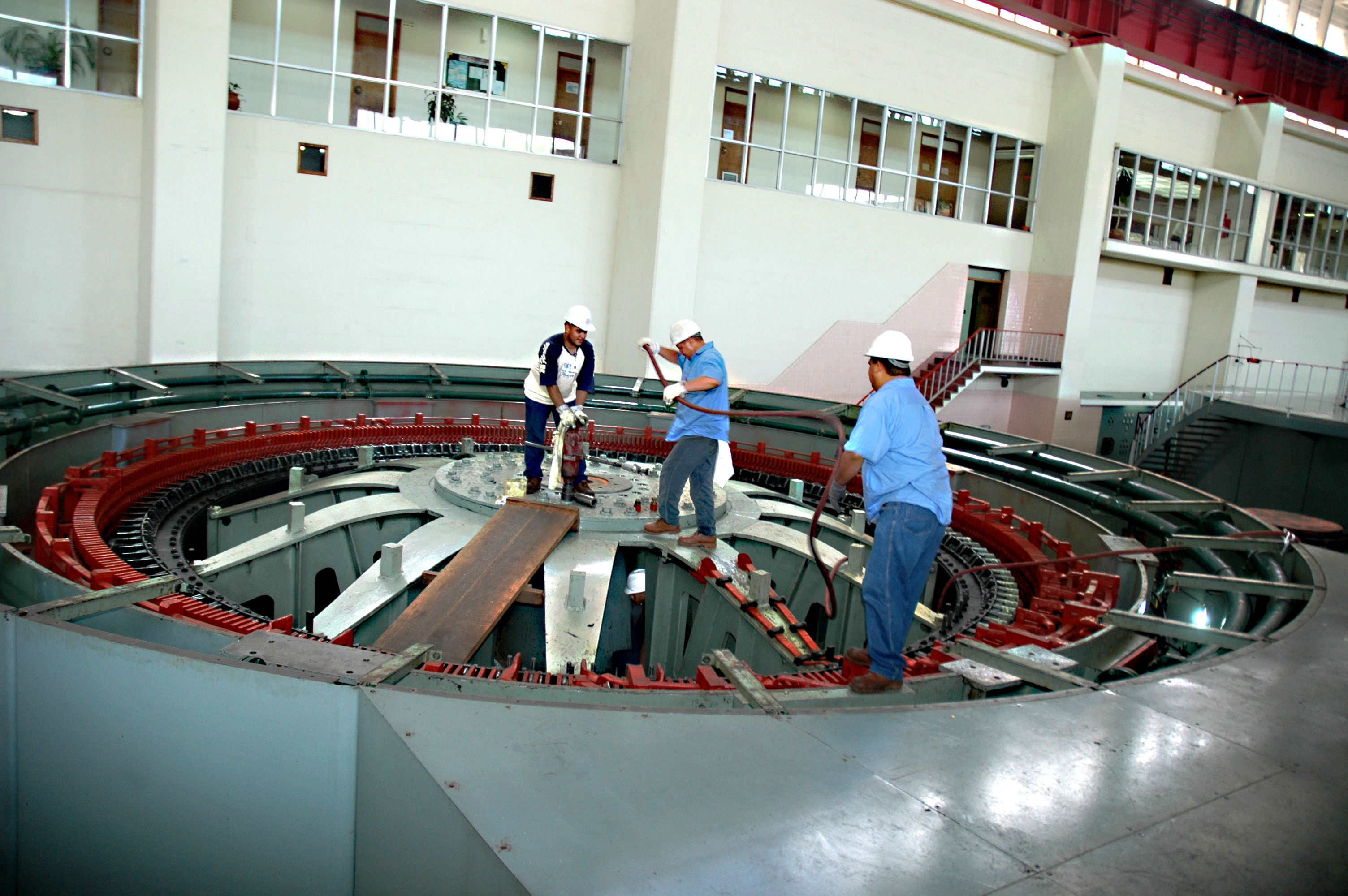
Henry Nadler in his documentary adds that 3500 workers began participating in 1967 to cover the 24 hours of construction of the largest power plant in Venezuela.
When the lake of the reservoir was formed in 1968, it caused the Caroní River to overflow, which triggered Operation Rescue of 21,000 animals and 5,000 species, a significant event in the history of Venezuela.
Rafael Rodriguez is an electrical engineer, who built the plant in its first part in the generation with the acquisition of electronic equipment from abroad.
«Progressively the generation, transformation, distribution and commercialization part was built,» Rodríguez said (See Video).
[embedyt]https://www.youtube.com/watch?v=cD6Lgxf9yTg&feature=youtu.be[/embedyt]
«This hydroelectric plant is the second largest in the Americas, and can be considered the first among those in a single country, since Itaipu’s is located between Brazil and Paraguay. The first power plant, with ten generation units and a total installed capacity of 2065 MW, began operating commercially in 1978. In 1985, a second machine house was built to house another ten generation units of 730 MW each. This brought the total capacity of the plant to 10,000 MW. The facility has three high voltage substations operating at 800 kV, 400 kV and 230 kV, all with switch and medium configuration. The plant supplies the Venezuelan electricity market with an average of 45,000 GWh of energy» 1 explains a digital library.
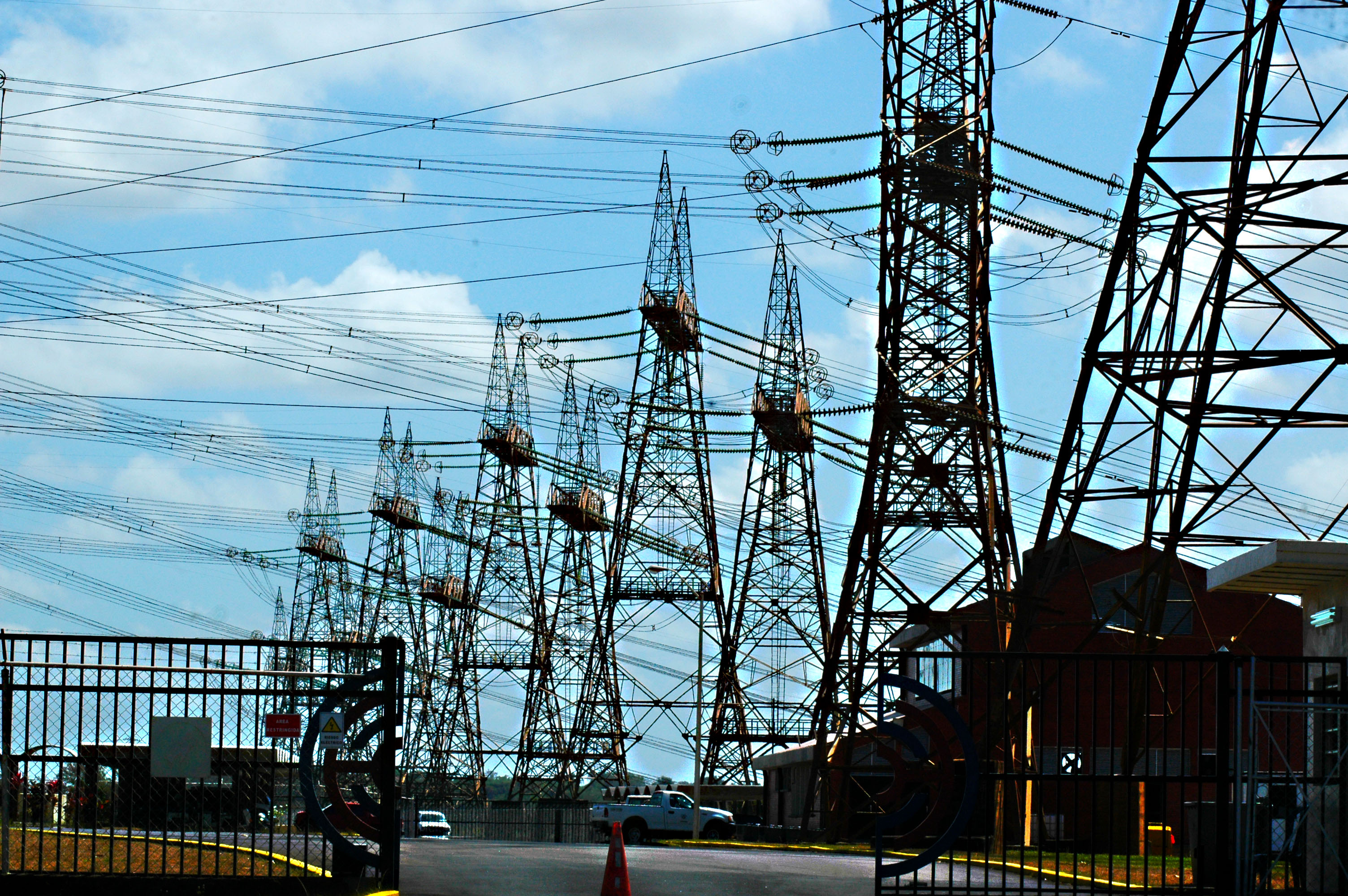
Hurtado Rayugsen indicates that the «famous Italian firm Inoccenti, which had an outstanding intervention in the so-called civil engineering works, participated in the work. The electrical part was advanced by American and Swiss consortiums; and, in the most recent times, it has been highlighted that an American-Canadian-Swiss conglomerate (Andritz, Alstom and ABB), is the one that has advanced the works oriented to potentiate and modernize the technological – computer part».
Henry Nadler’s filmic record of the work for more than 20 years, starting in 1964, reports that the country’s alternative work of growth, not oil, 56 contracts were made from nine countries and 16,000 workers participated, including workers and trained professionals.
Rafael Rodríguez, an electrical engineer, explains how transcendental the electrical complex is (Listen to Audio).
Hurtado Rayugsen points out that the impact of the hydroelectric complex on national growth is undeniable. We went from being a country with a notoriously deficient electric service to one with a nationwide interconnected system. Such a possibility had a favorable impact on the population and stimulated the establishment of industries and services of a different nature. This promising perspective corresponded to the displacement of the inhabitants of the republic, from the rural to the urban».
With this construction, the thermoelectric power plant transformed the country, boosting development, which is why historian Rayugsen recommends taking care of it and protecting it because it is a work of Venezuelan engineering, as engineer Rafael Rodíguez said.
How did the second attack on the National Electric System occur on March 24?
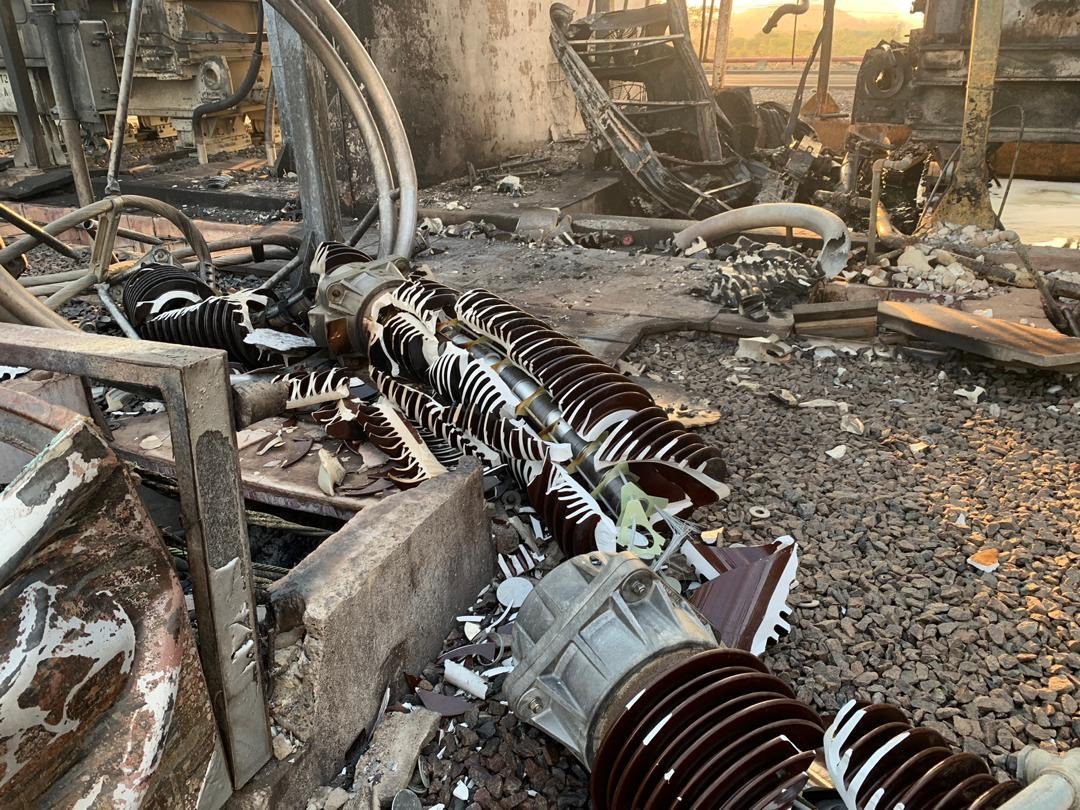
Attack to generation yard caused second blackout
At 1:29 PM on March 25, electricity was cut off in 17 states of Venezuela.
https://twitter.com/Mippcivzla/status/1110280927169708033
A new attack was registered in the Simón Bolívar Hydroelectric Power Station, located in the state of Bolívar, this would be the fourth in 18 days, the first one occurred last March 7. After preliminary investigations at the site, where the event occurred the President of the Republic Nicolás Maduro, indicated that a rifle with silencer was used to generate a fire in an area of high voltage transmission of electrical energy.
Another domino effect, not expected by government authorities, who had already controlled the traffic.transfer of electrical energy to the country. Before, the situation began the deployment of security officials to solve the new attack.
«We are with the evidence in our hands, there are the bullets and the type of bullets and rifle that was used, the investigation is advancing (…) it was an attack with an artero rifle, who did it, a mercenary, a murderer, sent by the coup opposition, from the right, without a doubt he knew what he was doing, he knew what he was attacking,» said Maduro.
El pueblo venezolano y el mundo entero debe saber la verdad; la derecha en su locura, pretende hacerse del poder político a través de métodos violentos y terroristas que solo le hacen daño al pueblo, no lo lograrán. pic.twitter.com/VxMuVtqSnm
— Nicolás Maduro (@NicolasMaduro) March 28, 2019
The objective in this opportunity was one of the areas, where the electrical energy produced by the stored water that makes the turbines turn is transmitted. The fire occurred in the courtyard of the 765 Kva generation of the Guri. The objective was to force the total interruption of the energy.
#LoDijo | "Los criminales generaron un incendio en el patio de 765 kva de Guri, con la intención aviesa de dañar de modo definitivo la generación y transmisión de la carga", informó el Vicepresidente sectorial @jorgerpsuv a través de su cuenta en Twitter pic.twitter.com/MjKDMbZ3cw
— Prensa Presidencial (@PresidencialVen) March 26, 2019
Los criminales generaron un incendio en el patio de 765 kva de Guri, con la intención aviesa de dañar de modo definitivo la generación y transmisión de la carga pic.twitter.com/YWCmUD6BGk
— Jorge Rodríguez (@jorgerpsuv) March 26, 2019
The vice president of communication, information and culture, Jorge Rodriguez, accused the terrorists of generating the fire at the site. «The terrorists achieved their goal of having the generation and transmission machines fall, generating the blackout. The right wing has no limits in its ambition and homicidal zeal,» Rodriguez said.
In this regard, Wills Rangel, president of the Central Bolivariana de Trabajadores, indicated that the fire in the Gurí was extinguished at nine o’clock in the morning by the PDVSA fire-fighting system moved from the Orinoco Oil Belt to the yards of the hydroelectric plant. He also emphasized that he worked together with different entities of the Bolivarian Republic:
«Not only are the Corpoelec teams there, but also the health service delivery teams, the Civil Protection teams, the security patrol has already been activated and is deployed throughout the national territory through the Ministry of People’s Power for the Interior and Justice, and the CEOFANB Strategic Operational Command has also been activated in the immediate action plan in all stations and substations,» Rangel wrote on his own in twitter.
No more than one hundred people participated in the action and used specialized fire extinguishers.
After quenching the fire began the management of electric charges to take the service to much of the country.
«We are in the phase of reconstruction of the burned and we have been managing loads, carrying electricity, making of guts heart we have reached 80% of the country (…) We are repairing the heart of the system, still to reach some states of the west of the country,» said President Maduro.
[embedyt]https://www.youtube.com/watch?v=Et5t-aJMij0&feature=youtu.be[/embedyt]
For this reason, the Attorney General of the Republic, Tareck Williams Saab, ordered the dispatch of prosecutors to the site to investigate and determine the responsibilities, since there were hypotheses of the use of a rifle in the attack.
Jorge Rodriguez, minister of communication and information, advanced this hypothesis by pointing out that the fire was caused by a sniper, and was generated in the courtyards of high voltage energy transformation.
«There comes the electricity, and is covered by ceramic insulators, whose name is bushing. Between the ceramic insulators and the cable that transmits electricity there is oil. This patio rests on 90,000 liters of oil,» Rodríguez said.
Because it is a volatile liquid, there is a possibility of being set on fire, which is why it is suspected that a sniper fired with high-caliber rifles and a silencer, from hills located between 110 and 150 meters from the transformation yards, he explained.
By firing into the courtyard, it was intended to extend the fire to the other areas of the attacked courtyard, which distributes the highest energy from the Guri to the rest of the country, he said and commented that because it is supported by the volatile insulator it is vulnerable.
He also said that the transmission yard in the middle was attacked, so that the fire will affect the other patios and the transmission cables, which would have left the country for months without electricity service.
[embedyt]https://www.youtube.com/watch?v=ZDgKHDEARG0&feature=youtu.be[/embedyt]
Faced with the situation, the National Government reported the suspension of labor and educational activities in the affected states, which would paralyze the country again in four days.
#VenezuelaLuchaPorLaPaz En este esfuerzo intenso de recuperación del Sist Elec Nacional, que sufrió el más grave ataque terrorista de la historia de Venezuela, el Gob bolivariano ha decidido suspender las actividades laborales y educativas mañana jueves 28. Nosotros Venceremos!
— Jorge Rodríguez (@jorgerpsuv) March 28, 2019
Meanwhile, the Bolivarian National Armed Force (FANB) will be resolved. It remained active, in this case in the state of Zulia, where in the first attack on March 7, more than 500 businesses were looted.
Faced with this situation, the governor of the entity Omar Prieto publicized through social networks the visit of the head of the Strategic Operational Command, Remigio Ceballos, who had the responsibility of protecting the Zuliano.
Because it is a border city, the entry of irregular groups is vulnerable, so there is a possibility that those who have implemented such a situation, during the first blackout could have been violent organizations.
Importante encuentro entre el A/J @CeballosIchaso Cmdte. del @ceofanb con @GobiernoDLZulia alcaldes del eje metropolitano y Alto Mando Militar del #Zulia evaluando los resultados del Plan de Contingencia para atender al pueblo, víctima de este ataque al sistema eléctrico. pic.twitter.com/7RklvVzUYJ
— Econ. Omar Prieto (@Omar_PrietoPSUV) March 27, 2019
At the same time, FANB was deployed in the national transmission network of the National Electric System to avoid another electromagnetic attack.
The head of the Strategic Operational Command, Remigio Ceballos explains in a video uploaded to Twitter his support to the President, Nicolás Maduro as well as the safeguard to the facilities, due to the second physical attack to the Gurí.
https://twitter.com/ceofanb/status/1110658697095774208
Just as the security agencies were deployed, so the people were deployed in different areas to protect national sovereignty. The routine continued, despite the difficulties as did the community of Pedro Básalo in the parish of El Valle de Caracas.
How did the community behave in this second attack?

Fusil could be manufactured and brought from the United States
The attack on the Venezuelan Electrical System on March 25 was with a long-range rifle against the transformation yard of the Simón Bolívar Hydroelectric Power Station, as denounced by President Nicolás Maduro.
The vice president of Communication, Culture and Tourism, Jorge Rodriguez, also explained it. He pointed out that snipers placed on the hill near the Guri, 100 or 150 meters away, were responsible for the fire that generated the three-day blackout in 17 states of the country.
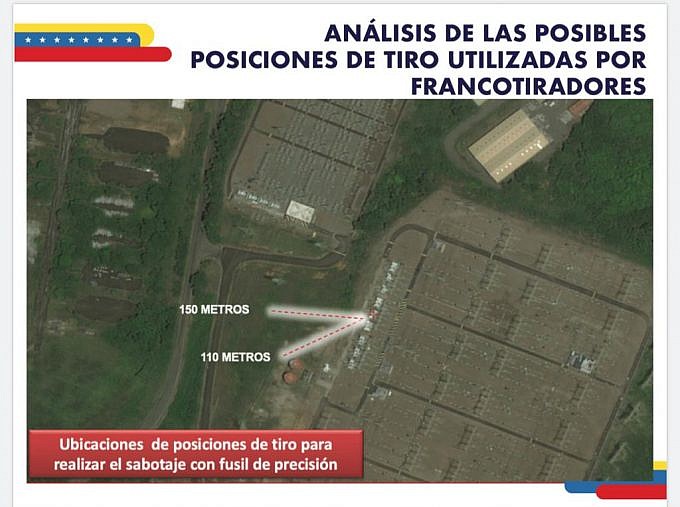
A 90,000-liter container of oil was shot at, which serves as an insulator within the operation of the generation yard. Because it is a high-caliber weapon, it can only be used by officials trained by the Armed Forces or by an elite group that wants to attack someone or an object.
Whoever fired the rifle could know how to handle the weapon, and also had to be trained to use it.
In Venezuela there is no such weapon of war, nor is it available to the population. The Law for the Disarmament and Control of Weapons and Ammunition published in the Official Gazette of the Republic of Venezuela.
Official Gazette No. 40.190 of June 17, 2013, prohibits and regulates the use of weapons by civilians.
The Bolivarian Government in 14 years, from 2003 to 2017 in Venezuela have destroyed 448,000 firearms, seized in various procedures carried out by state security agencies, as reported by the director general of the National Service for Disarmament (Senades), Delia Rondón, who indicated that in 2018 were disabled nine thousand 900 weapons, between short and long.
#Video | La destrucción de armas en Venezuela permite escribir nuevas historias, ya que luego de su fundición sirven como materia prima para la construcción de miles de hogares para las familias venezolanas, confirmando con ello que el camino es la PAZ. pic.twitter.com/humL62v5Q3
— Néstor Reverol (@NestorLReverol) April 3, 2019
By the way, the civilian population of Venezuela does not possess this type of weapon. Only this type of armament in Venezuela can have a trained official, which indicates that the shooter knew how to hit the target because he was caught in the courtyard.
How could a rifle enter the country? It could have entered by land or air. There is already a precedent for the entry of two drones bought by Colombia on the Internet to assassinate President Nicolás Maduro on Bolivar Avenue.
The U.S. news media CNN confirmed that the attack against Maduro was real, so there is a possibility that the rifles have passed from the neo-Granadino country through some of the 300 trails along the 2,219 kilometers of border between Venezuela and Colombia.
[embedyt]https://www.youtube.com/watch?v=PkKx8-FvQCQ&feature=youtu.be[/embedyt]
The other way is to be thrown by some aircraft or left by some of the clandestine runways in the state of Bolívar, since they exist for the extraction of gold or drugs; however, the government has destroyed a total of 488 runways in 2018, through the National Anti-Drug Organization (ONA) as part of the Venezuelan state’s fight against drugs.
In spite of the struggle, perhaps there will be some undetected, where he could have brought the high-flying rifle.
Those who came in the aircraft could have been trained personnel or not. In the United States to buy a rifle, you don’t need many requirements. Just being in stable health and having no criminal record can buy a weapon of war.
Only by presenting identification in the armory and filling out a questionnaire that is then verified by the gun control can you acquire the weapon.
There is the American CheyTac M-200 Intervention rifle manufactured by CheyTac for long-distance target interdiction. This weapon is capable of offering sub-MDA accuracy at distances of up to 2,300 meters, one of the longest ranges of all modern sniper rifles today, according to EDM Arms Windrunner.
[embedyt]https://www.youtube.com/watch?v=0i2Yg96Vkd8&feature=youtu.be[/embedyt]
There are other rifles; but the M-200 is the most used by the U.S. Armed Forces, for that reason, it could have been used by the one who shot at the transformation yard in the Gurí on March 29 at night.
CheyTac USA has been busy improving the legendary M200 Intervention! The photo above shows all of the modifications that have been made over the past year! pic.twitter.com/H7phGfzUBG
— CheyTac® USA (@CheyTacUSA) February 12, 2018
The country of the north is pointed out because it is the nation accused by President Nicolás Maduro of having the cybernetic technology that attacked the Electrical System on March 7. Yes, he did it the first time because not this time.
President Donald Trump indicated that all actions against his homologo Maduro are on the table, because it is not unthinkable that he sent a rifle or trained personnel.
What was the economic effect of the blackout on March 7 and 24?

U.S. Electric Attack Caused $1 Billion Daily in Losses
The attack against the Simón Bolívar hydroelectric plant, which left the country in the dark for 100 days, caused a delay in Venezuela’s growth. Loss of food, material goods and human life were affected in the act directed by the government of the United States as accused by the President, Nicolás Maduro.
According to economists, the damage caused by the electrical attack reaches 877 million dollars to the Venezuelan nation. With respect to the electrical engineer, Vladimir Adrianza indicates that «the economic losses caused to the nation in quantitative terms could be calculated in figures that are around the billion (one billion) U.S. dollars per day. This figure is obtained by dividing the estimated GDP for 2019 (approximately US$ 240 billion) by the number of working days (261 calendar days minus weekends) to be worked this year.
The financial specialists and analysts of Torino Economics place their calculations at $1.03 billion or a fall of 1.05% of GDP, according to their methodology based on the quantification of the direct effects of the paralysis of various sectors of the economy.
On the subject of losses, economist Asdrúbal Oliveros said that the country could lose between 180 and 200 million dollars daily. «We estimate the losses to date (March 12) at about $875 million. That’s almost one point of GDP,» he said.
Fedenaga recorded that the cost of the blackout was $1.4 million, according to a report released by the livestock organization.
#Comunicado de @Fedenaga ante la situación actual de nuestro pais. - #13Mar #Venezuela pic.twitter.com/pYcNsCaM8j
— FEDENAGA (@Fedenaga) March 13, 2019
One million kilograms of cheese, damaged by lack of refrigeration and paralysis in marketing, equals losses of $2,767,400 and supplies from slaughterhouses, and butcher’s shops, broke down just over three million kilograms of meat, representing damage of about 1.5 million dollars.
Another 5,041,096 liters of milk were lost or stopped producing. This represents costs of $1,400,304. «The suspension of electric service has caused the breach of commitments of labor and commercial payments associated with the livestock sector with perjury to 3,000,000 people,» reports Fedenaga.
Impacto económico que generó la peor falla en el sistema eléctrico del país #15Mar pic.twitter.com/aQf58oo2yR
— FEDECÁMARAS ZULIA (@fedecamarazulia) March 15, 2019
In the state of Zulia more than 500 establishments were looted. In a statement from the private company Polar lost about 18.6 billion bolivars. Individual losses were not quantified.
For his part, the president of the Táchira Cattlemen’s Association, Leonardo Figueroa, confirmed that due to the lack of electricity in the second blackout, 100,000 liters of milk were lost that could not be refrigerated.
Meanwhile, merchants in the Valles del Tuy calculate their losses between 80 % and 90 %. Argenis Pineda, president of the Network of Merchants of the municipality Tomás Lander, indicated that to the electrical failures was added the interruption of the service of Internet Aba Cantv, which generated that the points of sale did not work.
Without adding the personal losses in every home in the country, between electrical appliances and food, that figure increases.
In health, the Minister of People’s Power for Health Carlos Alvarado, said that although the country’s 392 hospitals have been affected by recent power failures, there were no human losses.
[embedyt]https://www.youtube.com/watch?v=ID5IyHTIjQ0&feature=youtu.be[/embedyt]
«There were no losses, practically no vaccines and none of the inputs, nor blood, reagents or medicines that require refrigeration,» Minister Alvarado said in an interview with Venezolana de Televisión.
How did the people react?

Peace was born in the Pedro Básalo of El Valle
In this second attack on the Electrical System it was not electromagnetic like the first one on March 7; now it was physical as announced by the president, Nicolás Maduro. Faced with this, the Venezuelan people resisted in peace, despite the provocations of some violent groups, who wanted to take advantage of the new circumstances.
While in El Valle parish, San Andrés neighborhood, Pedro Básalo and visiting the place, the calm and conscience of the community was perceived, which added other hours of another blackout caused by external factors.
Some already had lighters ready, others with cell phone flashlights were lit in the dark. Among those people, there is Mr. Rubén Sanoja who, this time, was illuminated with a lighter made by him with cooking oil, water and a wick.
«I was surprised by another blackout because the revolutionary government had already solved it; but the counterrevolution is like that, it does not descend, because there is no doubt of his participation in this other attack», commented Sanoja in front of his house.
In spite of her disability in the arm, she continues with her disabled partner. «We are moving forward because it is their struggle against us. You see, that National Assembly is a mess, it doesn’t exist. The right wing continues with its attacks against the people, now they want to take away our light; but they will not be able to,» said Sanoja.
That conscience said by Sanoja stands out because there were no violent acts in the community, neither the first blackout on March 7, nor the second on March 25. «People didn’t go out on the street because it’s a quotient of what’s going on. He opened his eyes and knows who is to blame. They know it’s the right,» argues Sanoja, who has been living in Pedro Básalo for 55 years.
Arturo Blanco, who assured that the people have a conscience, thanks to President Hugo Chávez, also said what Sanoja said. «The conscience of the people is thanks to Hugo Chávez. He didn’t teach us not to go out and fight, not just for style, but to be in peace,» said Blanco, who has been living in El Valle for 50 years.
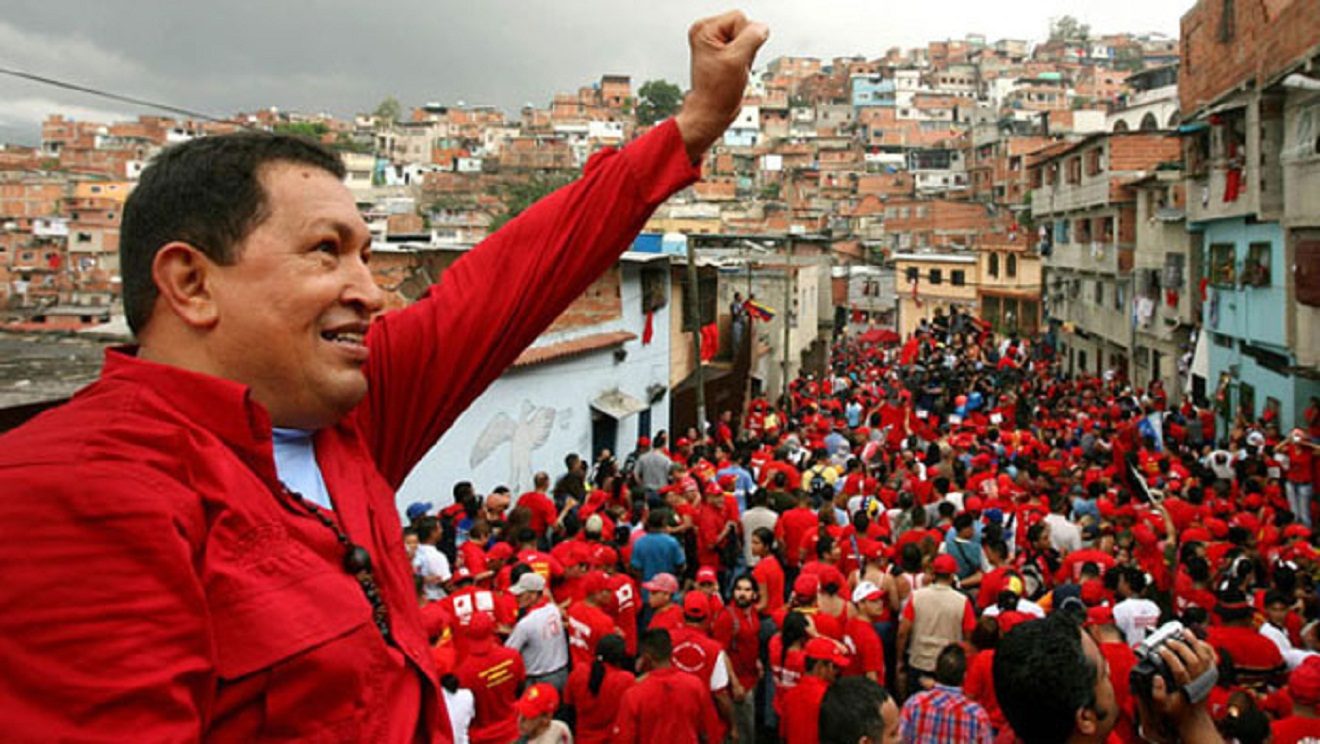
He adds that this second blackout was due to another sabotage of the electrical system.
«This was another sabotage from the right. Guaidó and Leopoldo are to blame along with the gringos for the attacks on the Gurí. I should put that Guaidó in jail and take away her parliamentary immunity,» Blanco said.
A sign that no one wants Juan Guaidó is that he was booed and taken out of the El Valle community when he came, Blanco said.
In addition, accusing the right-wing Blanco does not lose hope of improving the country’s situation because he will continue to «fight for the homeland.
That spirit of facing as Blanco has also, has Nohemí Aray who at 73 years of age, does not rest from doing good in his community.
«Since Hugo Chavez appeared I follow him. I had a bad experience with the adecos who took my sister’s house. From that moment on, I walked away from them and now I’ve been supporting the revolution for 30 years,» says Aray.
For Aray, better known in the community as «La Chana,» it’s not just what President Nicolás Maduro is suffering.
«I don’t think it’s the attacks against Maduro. They don’t let him rule the empire. It was not Maduro who took away our light and water, they were the right next to the gringos. Maduro does not want evil for his people, but rather, he wants happiness,» said Aray, from his house obtained in 1940 by his mother, now deceased. «What I feel is love for the Revolution,» Aray said.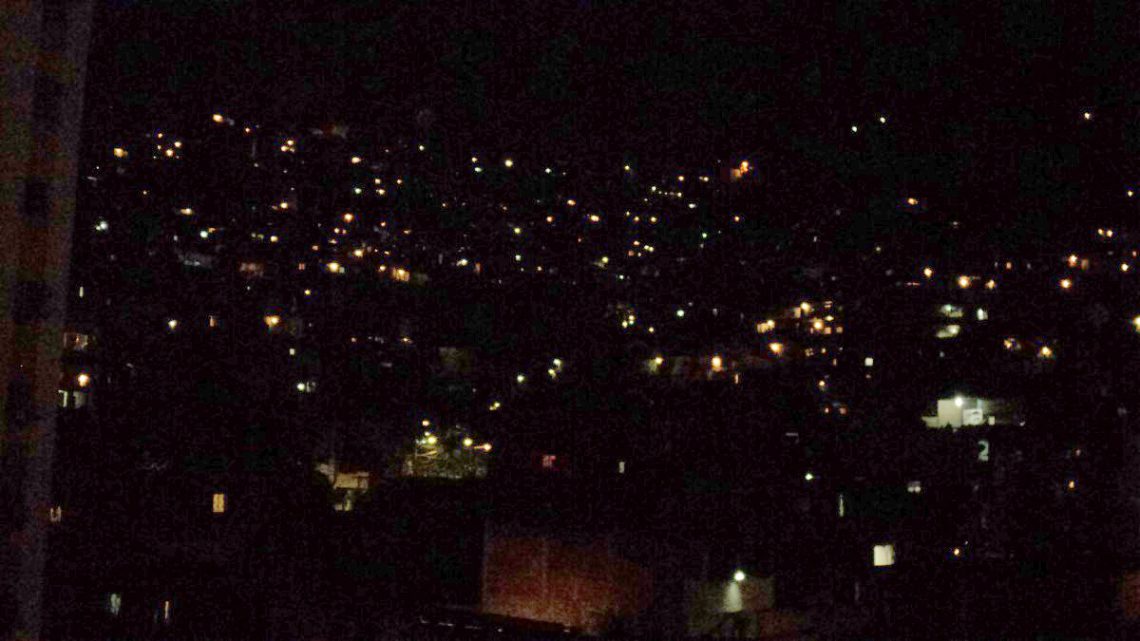
That defense to the president, Nicolás Maduro, was also expressed by Mr. Rosa Toro when she said she supported the Head of State.
«Here we continue to support the legitimate president of us who is Maduro. It’s not the other one that’s out there,» said Toro, who has been living in the for 38 years.
The support for the Bolivarian Revolution, for the last 20 years, inspires him to move forward, in spite of the attacks on the Electrical System, which he accused of the Venezuelan opposition along with the Americans.
«I don’t agree with violence. If I support peace,» commented Toro, who has a canteen in the, which is supplied by the national government.
«Eating only gets him caraota, pasta rice. We feed 150 people here when the food arrives for 15 days,» said Toro, who was lucky enough to light up the days of the candlelight blackout.
This was not the case with Maryorí Aray because of the high cost of candles, which are 2,000 Bolivars per unit. She had to settle for a homemade lighter, made by a neighbor.
«I didn’t leave my house during the blackout. I stayed here. Thank God I had gas and stored food,» said Aray, who is the coordinator of CLAP in the Pedro Básalo sector.
She only had a problem when her eleven-year-old grandson had asthma when the first blackout occurred on March 7. They had to take him to a site where he had a power plant to be able to connect the breathing system to calm the asthma, he said.
«The darkness scared him, that’s why his asthma accelerated,» said Aray, 49, living in the community.
Not so many years living in the sector as Araya has the social fighter Martín Díaz, who accused the Trump government of perpetrating the attack on the Venezuelan electrical system.
«The United States has this war against us. Venezuela with the Bolivarian Revolution will not yield ground. It will move forward as Hugo Chávez taught us. He told us on March 8 that difficult times were coming, because we are already suffering it, Chávez did not say so,» said Díaz, who has been supporting the Revolution for 22 years.
That teaching given by Chavez, we have now because the people are aware of what happened. You know that Juan Guidó is the culprit, no doubt about it. «The empire keeps attacking us, they will not leave us in peace; but we are heralds of peace,» commented Díaz.
Faced with what happened, Díaz points to the United States as responsible for the blackouts in Venezuela. And he emphasizes that powers such as Russia and China will come to help solve the problems experienced in the country.
Thus, with Díaz’s hope of solving the problems with external support, the community of Pedro Básalo experienced the second blackout with peace and awareness of who is to blame for the act, as did the president, Nicolás Maduro, when he accused the government of the United States.
How was the fourth attack on the National Electric System?

Fourth attack was synchronized and programmed against Guri transmission lines
After the recovery of electric light in five days after the third attack on March 25, another was made on March 29 and 30 at 7:11 p.m. which left 18 states of the territory without electricity.
#AHORA | Nuevos ataques, sincronizados a la misma hora, fueron perpetrados a líneas de transmisión del servicio eléctrico los días #29Mar y #30Mar informa el Vicep. Sectorial @jorgerpsuv
— Prensa Presidencial (@PresidencialVen) March 31, 2019
«We have received a new attack on the load and transmission center of our National Electric System. It was attacked to take out of operation the machines of the Hydroelectric Power Station of the Guri…They were synchronized attacks. Two new programmed and synchronized attacks… The attack is of similar characteristics to the one of March 7, they attacked the brain. The objective was to obstruct the efforts made by Corpoelec’s workers,» explained Communication and Information Minister Jorge Rodríguez.
https://twitter.com/PresidencialVen/status/1110283258976260096
The progressive recovery was confirmed by the local authorities of each entity, which shows responsiveness when a cut as occurred on March 7 is made. Miranda state governor Hector Rodriguez also reported on his Twitter account on the process of restoring electric service in his administrative entity after the blackout.
Reportamos que para las 10:30 PM hemos recuperado al 10% la energía eléctrica de #Miranda en los municipios #Sucre y #Chacao. Activos todos los planes de contingencia para brindar atención integral a nuestro pueblo. Seguimos trabajando para restablecer el servicio. #29Mar
— Héctor Rodríguez C. (@HectoRodriguez) March 30, 2019
Let us remember that the President, Maduro accused the government of the United States of having the technology to affect an Electrical System of any country of the world.
Just as he put it to have done by way of virus also exists possibility in the area or spatial part for being the nation of the north, a power in technological development.
The U.S. Armed Forces has an electromagnetic pulse weapon of the U.S. Navy, manufactured by «Northrop Grumman» that not only serve to attack electrical networks but also to deactivate electronic systems such as the missile orientation system.
It was not approved in reality, according to the information; but there is a possibility that it has been put into practice anywhere in the world.
[embedyt]https://www.youtube.com/watch?v=H2HjzGZRGB8&feature=youtu.be[/embedyt]
Also, the United States Air Force has revealed since 2012 that it possesses planes, as well as weapons capable of attacking electrical networks with electromagnetic pulses in order to disable them.
It is probable that a naval and aerial «mix» is being used, combined with cyberattacks and sabotage on the ground. On March 30, the Minister of People’s Power for Defense, Padrino López announced the presence of U.S. planes near Venezuela carrying out radioelectric operations.
This is evidence of possible participation in the first and fourth attacks on the Electrical System at the Simón Bolívar Hydroelectric Power Station in March.
[embedyt]https://www.youtube.com/watch?v=xU8Djz1OmEU&feature=youtu.be[/embedyt]
But, there is a space technology that could also be used by the Trump government or the North Treaty Organization (NATO) for having a presence in Colombia.
Tawfik A. AI-Kusayer, an engineer from the King Saud University in Saudi Arabia, published an investigation into the use of satellites to attack other enemy sites.
Al-Kusayer, in the research article «The susceptibility of communications satellites to the nuclear electromagnetic pulse», explains that the Electromagnetic Pulse (EMP) can cause great… damage is a permanent irreversible degradation of the functional capabilities of components or systems. For this reason, the use of «ARABSA T satellites at an altitude of 36,000 km above the equator» is being experimented to send a flux of gamma radiation and x can interact with the structure of the satellite and the components to cause an EMP.
Although the investigation into terrorism against the Venezuelan government is still in process, it has data on how this happened, because the area option is present. The visit of Russian military evidences the support of a world power.
How was the response of the Corpoelec workers?

Corpoelec workers played heroic role in the face of electromagnetic terrorism
After the electric attack on the National Electric System in the Simón Bolívar Hydroelectric Power Station on March 7, the workers of the National Electric Corporation (Corpoelec) were the protagonists in the recovery of the service.
While the Venezuelan people resisted in every home, the public employees of the Ministry of People’s Power for Energy along with the Executive Branch were doing the corresponding work to be able to restore electricity in 18 states of the country.
The first cyber attack was by means of a virus sent from the United States to affect the devices that have the function of controlling the distribution created by the transformers to the transmission yards, explained President Nicolás Maduro, from the Miraflores Palace.
But, it was not only to the celebrities, it was also to the transmission network in the highways that have the most powerful dispatch of the Central.
After this attack, the personnel were activated in the different emergency areas, since they did not expect the attack on the technological equipment found in the Marquez of the city of Caracas and that of the Hydroelectric Power Station.
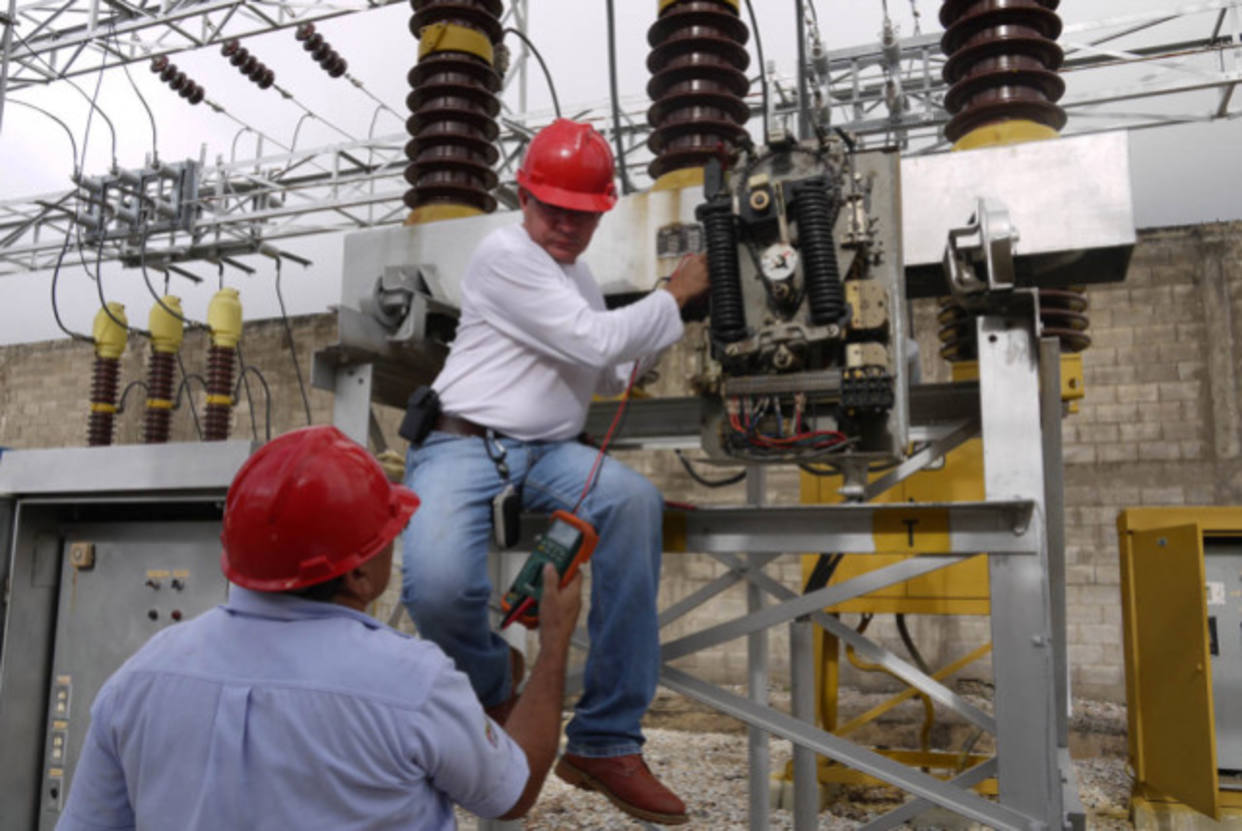
This would be the beginning of the arduous work of hundreds of engineers, technicians, administrators and workers of Corpoelec, at all hours because the first blackout occurred at five o’clock in the afternoon, when the population left work.
The revision of the computers and the main screen of the network of electrical charges left in black by the malicious transferred by Internet, from North America made complicated the restoration of the electrical energy in all the national territory.
The uncertainty to resolve the breakdown was present in each of the professionals on duty, since the electric light had to be activated as soon as possible.
When the President spoke, Nicolás Maduro on a national radio and television channel, from the Miraflores Palace announced the cyber terrorist attack while the Electrical System was progressively activated with the presence of specialists from the area found in the Gurí.
The Head of State congratulated the Corpoelec workers for the gradual restitution, in spite of the three days without service throughout the national territory. Meanwhile, Jorge Rodriguez, vice-president of Communication, Culture and Tourism also thanked the arduous struggle of each worker on the site.
With more than 72 hours of continuous work, the light was restored on March 8. The daily newspapers of each Venezuelan were already normalized. The victory was obtained before the multiple attack, independently of problems in the recovery because the electrical energy was restored of manual form, as it was announced by the president, Nicolás Maduro.
As 18 days passed, on March 25 at 1 p.m., the second attack occurred, but it was already physical in the transmission yard, located in the Hydroelectric Power Station in the state of Bolivar.
Corpoelec’s official Twitter account announced the event and images of the fire were shown. Wil Rangel, president of the Central de Trabajadores (Central of Workers), spread through the social network the participation of firefighters and technicians in the event.
After the restitution, the electrical energy has been removed in every home, company and work area in 17 states again. Each worker on their site did his or her job while the agencies put out the fire, they did the same to placate the fire.
The president, Nicolás Maduro and minister of communication and information, Jorge Rodríguez announced that he was allegedly a franc shooter with a long-range rifle, placed on a hill 150 meters away that caused this new blackout.
The firefighters joined the daily struggle, as well as the Corpoelec workers, who were in the different headquarters of the Ministry of Electric Energy and Gurí himself.
When the fire was extinguished in less than 24 hours, another stage began with the placement of new transmission devices damaged by the second attack, meanwhile, there was no rest to restore electrical service again.
In spite of the intermittent electric light, the Corpoelec workers restored the energy until the third multiple and coordinated attack was carried out on March 29th and 30th. On March 31st, the employees of the government subsidiary had 28 days, 672 hours and 40,320 seconds to solve the energy problema.
Faced with this heroic act, President Maduro himself made an act of presence at the hydroelectric plant with the delivery of the sword of Bolivar to the workers. He compared the struggle with the 2002 Petroleum strike.
The President thanked each one of them for being at the forefront of the restitution of the Electrical System, affected by the United States, Colombia and Chile, and relieved Maduro before a rally outside the Miraflores Palace.
In his personal account, he hung a video where he shows the entry of the sword, showing that together we are more.
Les entregué la réplica de la espada de nuestro Libertador Simón Bolívar, a las trabajadoras y los trabajadores de #CORPOELEC en Guri, por su destacada labor en la recuperación del servicio eléctrico. Un merecido reconocimiento, en nombre del pueblo venezolano. pic.twitter.com/PBlXaeEgbi
— Nicolás Maduro (@NicolasMaduro) March 17, 2019
Then he announced the president, Maduro who ordered the vice-president, Jorge Rodriguez to be in the celebration of the SE while the vice-president of the Republic, Delcy Rodriguez should be in the Guri supporting the workers.
https://twitter.com/Mippcivzla/status/1115393265237405697
Along with the struggle at the site, was the vice president of the Republic, Delcy Rodriguez and other ministers working at the site. In his personal account, Rodriguez was observed in a video serving food to workers, deserving action for the rapid uplift of energy.
The activation of the Electrical General Staff allowed the presence of the Executive Branch to be formalized, which persists in improving energy in every part of the country

DOCUMENTS, ARCHIVES AND ADDITIONAL EVIDENCE.
[pdf-embedder url=»http://cuatrof.net/wp-content/uploads/2019/03/Report-of-the-Comimission-to-Assess-the-Threat-to-the-United-States-from-Electromagnetic-Pulse-EMP-Attack-2004.pdf» title=»Report of the Comimission to Assess the Threat to the United States from Electromagnetic Pulse (EMP) Attack 2004″]
[pdf-embedder url=»http://cuatrof.net/wp-content/uploads/2019/03/Report-of-the-Comimission-to-Assess-the-Threat-to-the-United-States-from-Electromagnetic-Pulse-EMP-Attack.pdf» title=»Report of the Comimission to Assess the Threat to the United States from Electromagnetic Pulse (EMP) Attack 2008″]


